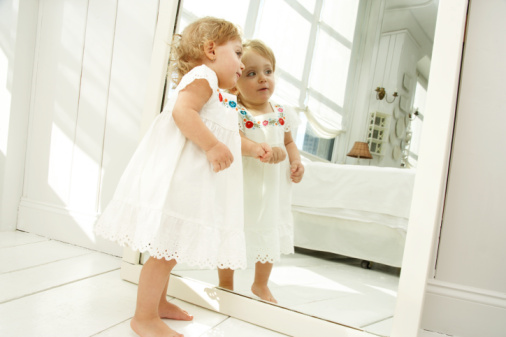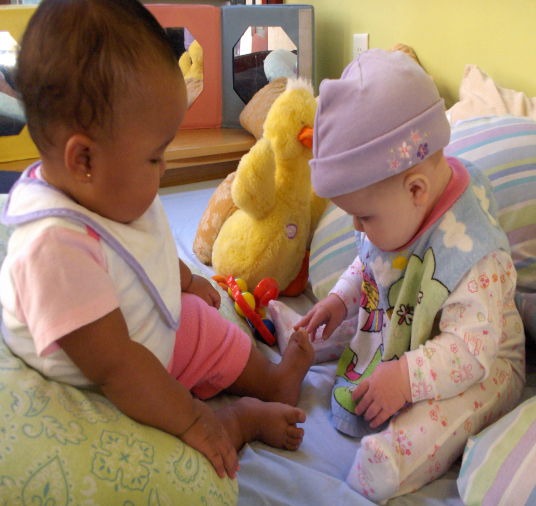Freudian Lectures
It is possible to discuss several images that are related to Freud’s concepts of self and other. For example, one can look at the following pictures. To some degree, they throw light on the behavior of children and infants at the time when they have little background knowledge. Moreover, they illustrate the importance of bodily experiences.
Picture 1

Picture 2

These images can show how a child learns to distinguish self from other. It should be kept in mind that Sigmund Freud (1991) places emphasis on the notion of bodily self. In other words, an individual’s perception of one’s identity is based on the awareness of his/her body (Freud, 1991). This argument is particularly relevant when one speaks about children.
This is one of the first points that can be made. Thus, the first picture is a good illustration of a how a child tries to learn more about oneself. This is one of the first aspects that can be distinguished. It should be kept in mind that this image depicts a child who acts an explorer. At this point, she is not accustomed to seeing her reflection in the mirror.
Moreover, the movements in front of the mirror help her strengthen the sense of her bodily self. At this point, she does not have a distinct perception of her physical appearance. Overall, Sigmund Freud pays close attention to bodily sensations of a person whose identity has not been developed completely.
They are essential for describing the concept of self which is a vital component of personality. This is one of the aspects that can be identified. It is important for understanding Freud’s ideas and his views on the formation of a human being’s inner world.
However, at the same time, an individual learns to distinguish oneself from other people. For instance, one can look at the second image which illustrates how infants identify the differences in the physical appearance of one another. This experience is of great importance for these children because they can see the distinction between self and other. Moreover, in this way, they can learn more about the surrounding world.
Moreover, these children can shape their own identity by seeing their bodily images. In each of these cases, bodily sensations play an important role. Thus, one can say that the chosen pictures can be related so some of the themes which Sigmund Freud examines in many of his works.
Reference List
Anna Bing Arnold Children’s Center. (2010). W. M. Keck Infant and Toddler Center. Web.
Cross-cultural reflections on the mirror self-recognition test. (2010). Web.
Freud, S. (1991). Introductory Lectures on Psychoanalysis. New York, NY: Penguin Books Limited.